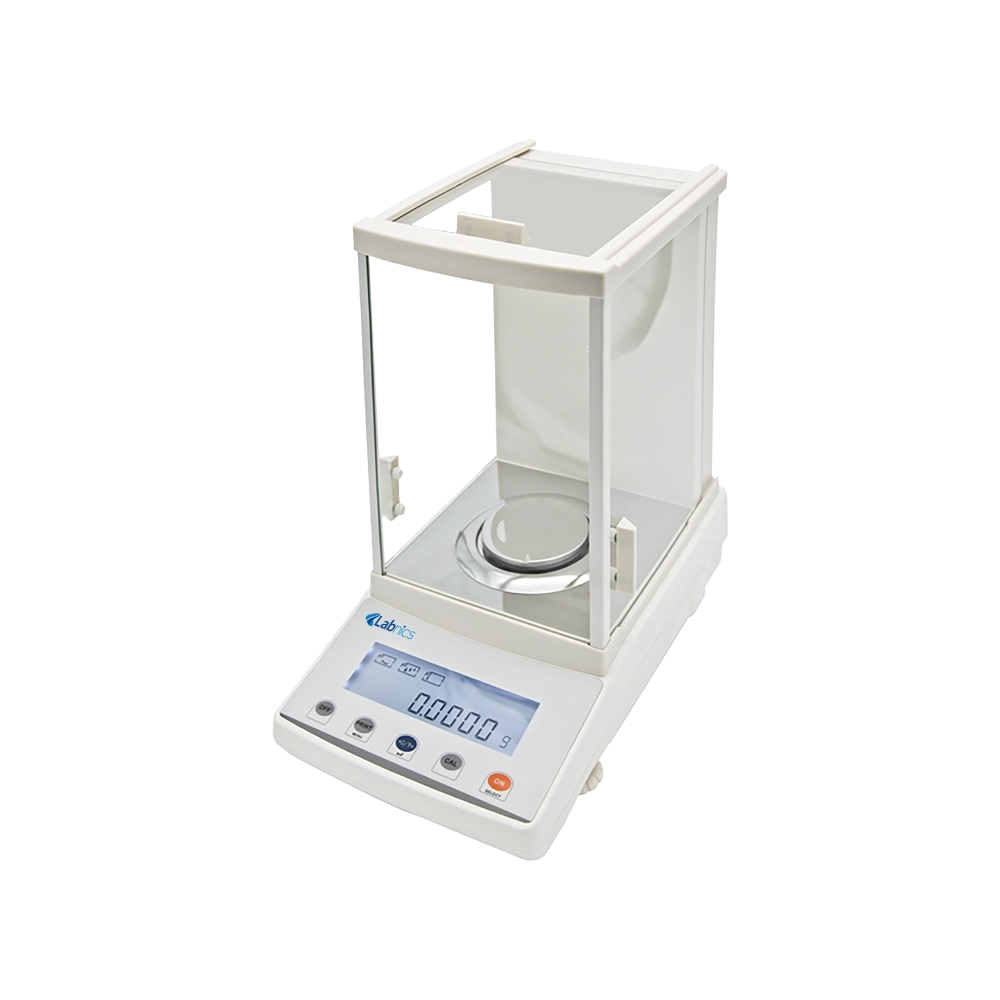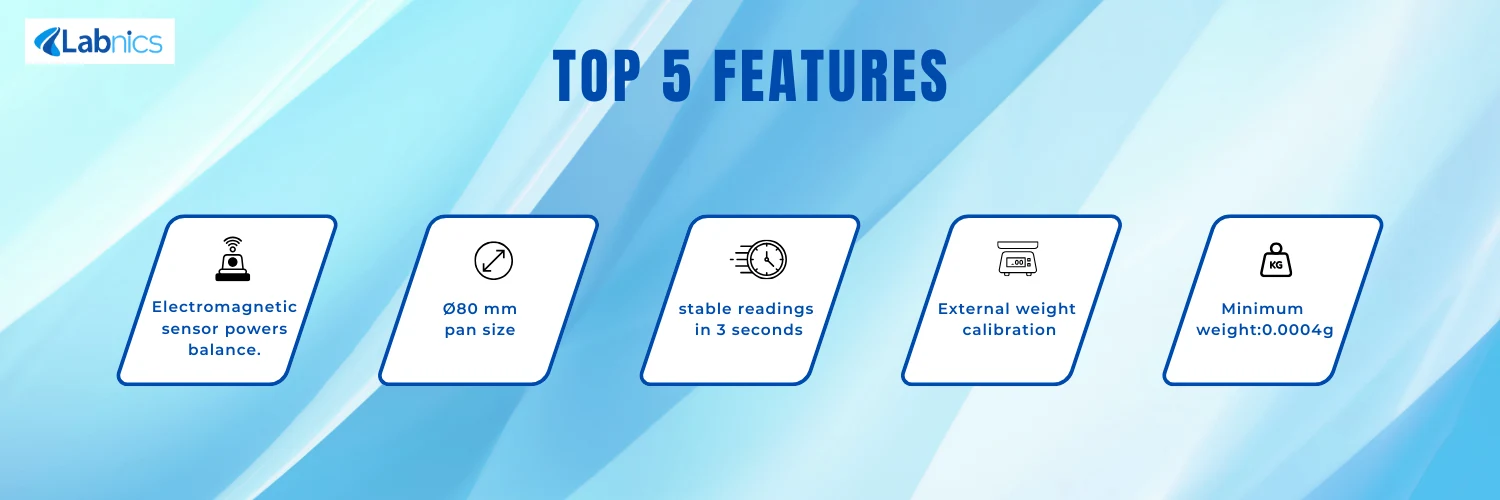Analytical Balance NAB-106 is a precision unit designed with durability and accuracy. Encased in sturdy aluminum, it ensures long-lasting reliability. With a capacity of 300g, it's suitable for a range of weighing needs. The LCD display, featuring a white backlight and clear black font, provides easy-to-read measurements. Plus, its wind-proof cover protects against external interference. Operating smoothly within temperatures of 15 to 35°C, it's a dependable choice for precise measurements in various environments.
FAQ for Analytical Balance NAB-106
1: What makes the analytical balance suitable for precise measurements?
This balance offers a high precision of 0.0001 g and a minimum weighing capability of 0.0004 g, ensuring extremely accurate results ideal for sensitive analytical tasks.
2: How does the wind-proof cover improve measurement accuracy?
The integrated draft shield protects the weighing pan from air currents and external disturbances, stabilizing the reading and reducing fluctuations for more reliable results.
3: What is the significance of the external calibration feature?
External calibration allows users to verify and adjust the balance’s accuracy using certified calibration weights, ensuring consistent performance over time.
4: What are the benefits of electromagnetic sensor technology?
Electromagnetic sensors offer high sensitivity and fast response times while reducing mechanical wear, resulting in enhanced durability and precision.
5: How can I connect the analytical balance NAB-106 to external devices?
It includes an RS232 communication port, allowing connection to computers, printers, or data management systems for seamless data transfer and record keeping.
6: Why does the Analytical Balance have a glass shield?
The transparent glass shield is designed to block external air drafts and dust. This ensures consistent weighing conditions and prevents fluctuation in readings. It helps protect both the sample and the measurement integrity.
7: Is the Analytical Balance easy to calibrate?
Most analytical balances include internal or external calibration options. Internal calibration is automatic and ensures precision without manual effort. External calibration allows the use of certified weights to validate accuracy regularly.
8: How durable is an Analytical Balance?
Analytical balances are designed with sturdy materials and a sealed weighing chamber. This makes them durable and resistant to environmental contamination. Proper handling and regular maintenance extend their lifespan.
9: How often should an Analytical Balance be cleaned?
Cleaning should be done regularly, ideally after each use. This prevents dust, residue, or chemical spills from affecting accuracy. Use a soft brush or lint-free cloth and avoid harsh chemicals that may damage internal components.



